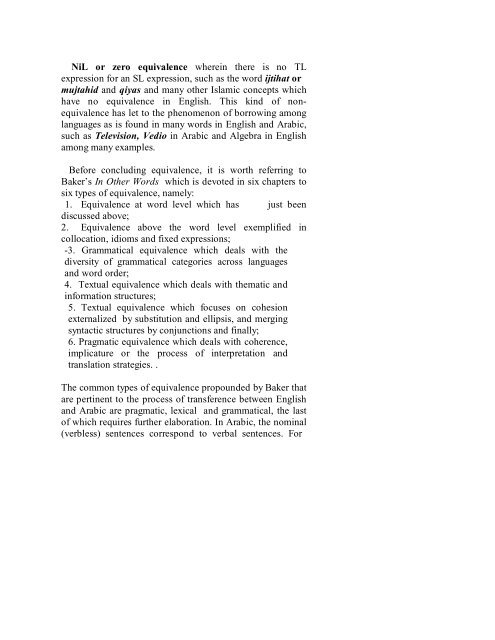424_2061_A.B.
424_2061_A.B.
424_2061_A.B.
- No tags were found...
You also want an ePaper? Increase the reach of your titles
YUMPU automatically turns print PDFs into web optimized ePapers that Google loves.
NiL or zero equivalence wherein there is no TLexpression for an SL expression, such as the word ijtihat ormujtahid and qiyas and many other Islamic concepts whichhave no equivalence in English. This kind of nonequivalencehas let to the phenomenon of borrowing amonglanguages as is found in many words in English and Arabic,such as Television, Vedio in Arabic and Algebra in Englishamong many examples.Before concluding equivalence, it is worth referring toBaker’s In Other Words which is devoted in six chapters tosix types of equivalence, namely:1. Equivalence at word level which has just beendiscussed above;2. Equivalence above the word level exemplified incollocation, idioms and fixed expressions;-3. Grammatical equivalence which deals with thediversity of grammatical categories across languagesand word order;4. Textual equivalence which deals with thematic andinformation structures;5. Textual equivalence which focuses on cohesionexternalized by substitution and ellipsis, and mergingsyntactic structures by conjunctions and finally;6. Pragmatic equivalence which deals with coherence,implicature or the process of interpretation andtranslation strategies. .The common types of equivalence propounded by Baker thatare pertinent to the process of transference between Englishand Arabic are pragmatic, lexical and grammatical, the lastof which requires further elaboration. In Arabic, the nominal(verbless) sentences correspond to verbal sentences. For69
















